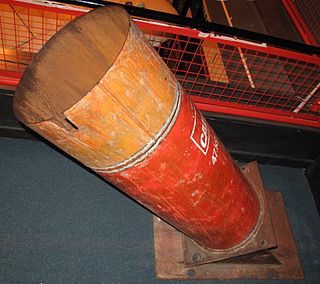 W
WBarrack buster is the colloquial name given to several mortars, developed in the 1990s by the engineering group of the Provisional Irish Republican Army (IRA).
 W
WBechowiec was a Polish World War II submachine gun developed and produced by the underground Bataliony Chłopskie resistance organisation. It was designed in 1943 by Henryk Strąpoć and was produced in underground facilities in the area of Ostrowiec Świętokrzyski. Its name was coined after the Bataliony Chłopskie organization members who were informally called bechowiec.
 W
WThe Błyskawica, was a submachine gun produced by the Armia Krajowa, or Home Army, a Polish resistance movement fighting the Germans in occupied Poland. Together with a Polish version of the Sten sub-machine gun, with which it shares some design elements, it was the only weapon mass-produced covertly in occupied Europe during World War II.
 W
WThe Borz submachine gun is one of a number of improvised firearms produced in Chechnya. It was produced in small numbers from 1992 to 1999. It was used primarily by Chechen separatists. It is named after the Borz (wolf) because of its position as Chechnya's national animal.
 W
WThe Carlo is a submachine gun manufactured by small workshops in Palestine. The design has been inspired by the Swedish Carl Gustav m/45 and its Egyptian Port Said variant, however the similarity is often only passing. Due to the Carlo being homemade, it's affordable to be purchased in the black market not only by Palestinians targeting Israelis but also by Arab-Israeli gangs. The Carlo is cheap to manufacture, but it's inaccurate and prone to jamming and misfire.
 W
WChoroszmanów submachine gun was a Polish submachine gun created by Grzegorz Choroszman during German occupation of Poland.
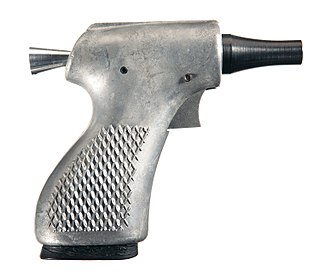 W
WThe Deer gun, developed by the CIA, was a successor to the Liberator pistol. The single-shot Deer gun was intended for distribution to South Vietnamese guerrillas as a weapon against North Vietnamese soldiers.
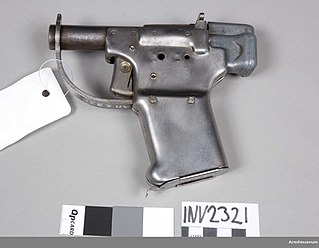 W
WThe FP-45 Liberator is a pistol manufactured by the United States military during World War II for use by resistance forces in occupied territories. The Liberator was never issued to American or other Allied troops, and there are few documented instances of the weapon being used for its intended purpose; though the intended recipients, irregulars and resistance fighters, rarely kept detailed records due to the inherent risks if the records were captured by the enemy. Few FP-45 pistols were distributed as intended, and most were destroyed by Allied forces after the war.
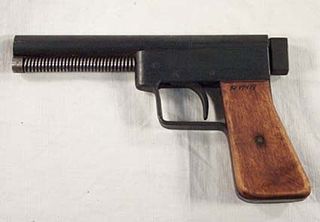 W
WImprovised firearms are firearms manufactured other than by a firearms manufacturer or a gunsmith, and are typically constructed by adapting existing materials to the purpose. They range in quality from crude weapons that are as much a danger to the user as the target to high-quality arms produced by cottage industries using salvaged and repurposed materials.
 W
WInsurgency weapons and tactics are weapons and tactics, most often involving firearms or explosive devices, intended for use by insurgents to engage in guerrilla warfare against an occupier, or for use by rebels against an established government. One type of insurgency weapon are "homemade" firearms made by non-professionals, such as the Błyskawica (Lightning) submachine gun produced in underground workshops by the Polish resistance movement. Another insurgency weapon is a sanitized weapon, which is a weapon of any sort that has had normal markings, such as the manufacturer's name and/or serial number, omitted or obscured in an attempt to hide the origin of the weapon.
 W
WKIS was the name of a Polish submachine gun from the time of the Second World War. It was designed and manufactured by engineers in Jan Piwnik's "Ponury" ("Grim") guerrilla unit that was operating in Holy Cross Mountains region.
 W
WA Molotov cocktail, also known as a petrol bomb, gasoline bomb, bottle bomb, poor man's grenade, fire bomb, fire bottle or just Molotov, sometimes shortened as Molly, is a generic name used for a variety of bottle-based improvised incendiary weapons.
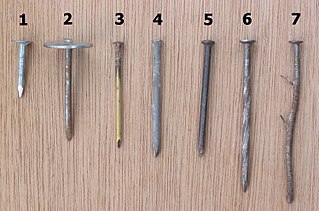 W
WA nail bomb is an anti-personnel explosive device containing nails to increase its effectiveness at harming victims. The nails act as shrapnel, leading almost certainly to greater loss of life and injury in inhabited areas than the explosives alone would. A nail bomb is also a type of flechette weapon. Such weapons use bits of shrapnel to create a larger radius of destruction.
 W
WA pipe bomb is an improvised explosive device, which uses a tightly sealed section of pipe filled with an explosive material. The containment provided by the pipe means that simple low explosives can be used to produce a relatively large explosion due to the containment causing increased pressure, and the fragmentation of the pipe itself creates potentially lethal shrapnel.
 W
WThe Pleter submachine gun is a submachine gun created in 1991, when the Breakup of Yugoslavia left Croatia with few weapons to arm their yet to be formed military in the midst of the Croatian War of Independence. The embargo prevented the newly formed state from legally buying equipment abroad, so they chose to try to design and produce some new weapons locally, mostly based on second generation of submachineguns.
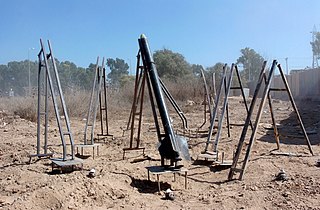 W
WThe Qassam rocket is a simple, steel artillery rocket developed and deployed by the Izz ad-Din al-Qassam Brigades, the military arm of Hamas. These rockets cannot be fired to target specific military objectives in or near civilian areas, and are "indiscriminate when used against targets in population centers."
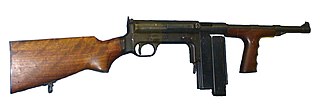 W
WThe United Defense M42, sometimes known as the Marlin for the company that did the actual manufacturing, was an American submachine gun in World War II. It was produced from 1942 to 1943 by United Defense Supply Corp. for possible issue as a replacement for the Thompson submachine gun and was used by agents of the Office of Strategic Services (OSS).
 W
WThe Winchester Liberator was a 1962 prototype 16-gauge, four-barrelled shotgun, similar to a scaled-up four-shot double action derringer. It was an implementation of the Hillberg Insurgency Weapon design. Robert Hillberg, the designer, envisioned a weapon that was cheap to manufacture, easy to use, and provided a significant chance of being effective in the hands of someone who had never handled a firearm before. Pistols and submachine guns were eliminated from consideration due to the training required to use them effectively. The shotgun was chosen because it provided a very high volume of fire with a high hit probability.
 W
WZagi M-91 is a submachine gun created in 1991, when the dissolution of Yugoslavia left Croatia with few or no weapons to arm their military in the time of Croatian War of Independence. Since the embargo prevented the newly formed state from legally buying equipment abroad, they had no choice but to design new weapons locally. This gun was produced by LIKAWELD, now bankrupt machine tools factory based in Zagreb, also called the "First Croatian Weapons Factory", PHTO.